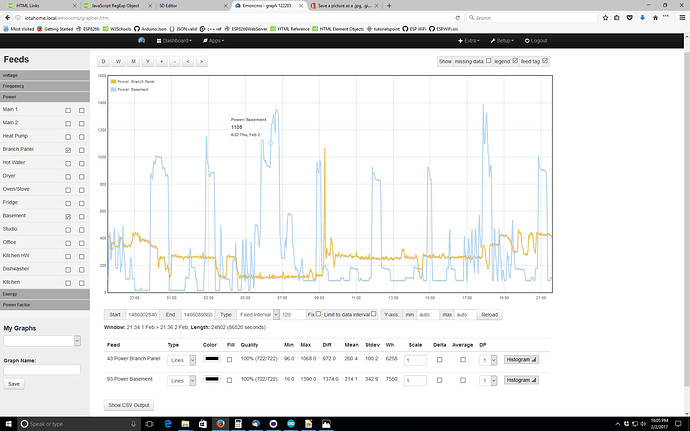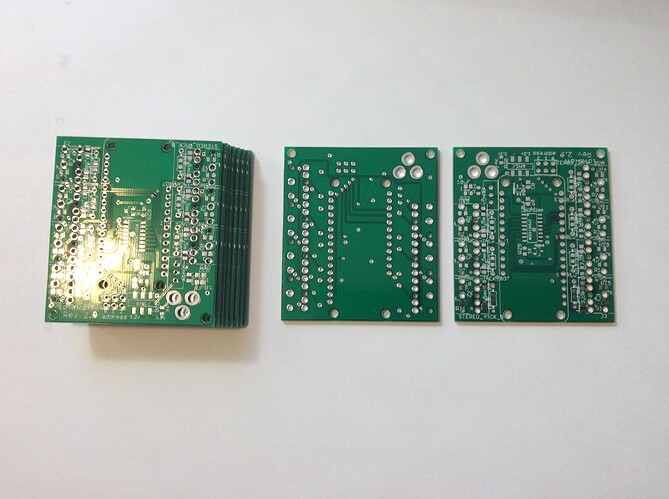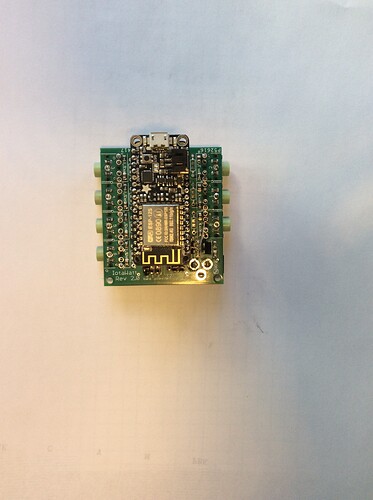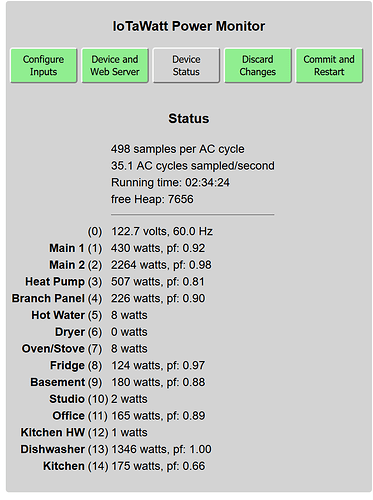At long last, all of the major pieces are in place and seem to be working reliably. Here’s what the beast looks like. I’ll get a better picture in daylight tomorrow.
The top board is an AdaFruit “feather” ESP8266. Under that is an AdaFruit feather “data-logger” shield that has the SDcard and a real time clock. Below that are three IoTaWatt 2.1 ADC shields. The visible side has nine inputs., the other has 12 for a total of 21.
On average it samples about 35 inputs per second, so each input gets sampled about 1.5 times per second. Each cycle sampling consists of about 490 voltage and current readings. That’s at 60Hz. At 50Hz the cycle rate would decrease slightly and the samples per cycle would increase.
The top ADC is configured with burden resistors, has channel 0 set for VT input, and is running at 3.3V.
The second ADC has channel 0 set for CT input (though none connected), has no burden resistors so is running voltage type CTs (SCT013-030), and is also running at 3.3V.
The bottom ADC is configured like the second except it is running at 1.2V, so it has a 33mv CT connected and an SCT013-050 CT that is remarkably accurate at low wattage with the 1.2V and 12 bit ADC. The trade-off is that it will overdrive at about 25A.
Each of the ADC boards can be configured independently, and run at either 3.3 or 1.2 volts. Any channel may be used for voltage sensing, but channel 0 on each shield has a select-able attenuation circuit and 5mm jack for a VT. With three shields and three VTs, three-phase should not be a problem.
The SD log has been redesigned to support faster query. It takes about 4 seconds to serve up a 750 data point graph. I’ll get into the pros and cons of this log format later, but the typical emoncms graphs are probably the worst case. With redesign of the graphing apps, it should be able to serve up any number of simultaneous feeds in the same 4 seconds. Pie charts should be instantaneous over any time period.
Support for eMonCMS is solid. It will update in real time, and it will catch up with bulk updates after an internet outage. Because it has a real time clock and lots of SD storage, it can run without internet indefinitely, catching up when connected, or just serving the data locally on local WiFi. There’s no need for MQTT or any intermediary store and forward.
What’s left is some cleanup and burn in. I’ll be deploying a few in other residences over the next couple of weeks. Someone is currently exploring the cost of having some ADC boards built by a fabrication service. I expect the cost will be moderate in small quantities.
Software and hardware updates to Github next week.
The next phase of this project will be to integrate more of the Emon apps and probably develop some new ones.





